After another marathon weekend of working on the layout, I’ve made some great progress. Nearly all of the tracks in Bethesda are in. All of the drops are wired and nearly all of the turnouts have Blue Point manual switch machines installed. I cleaned off the table to get a look at the overall layout:


I couldn’t resist doing a bit of operating. Man, this felt good!
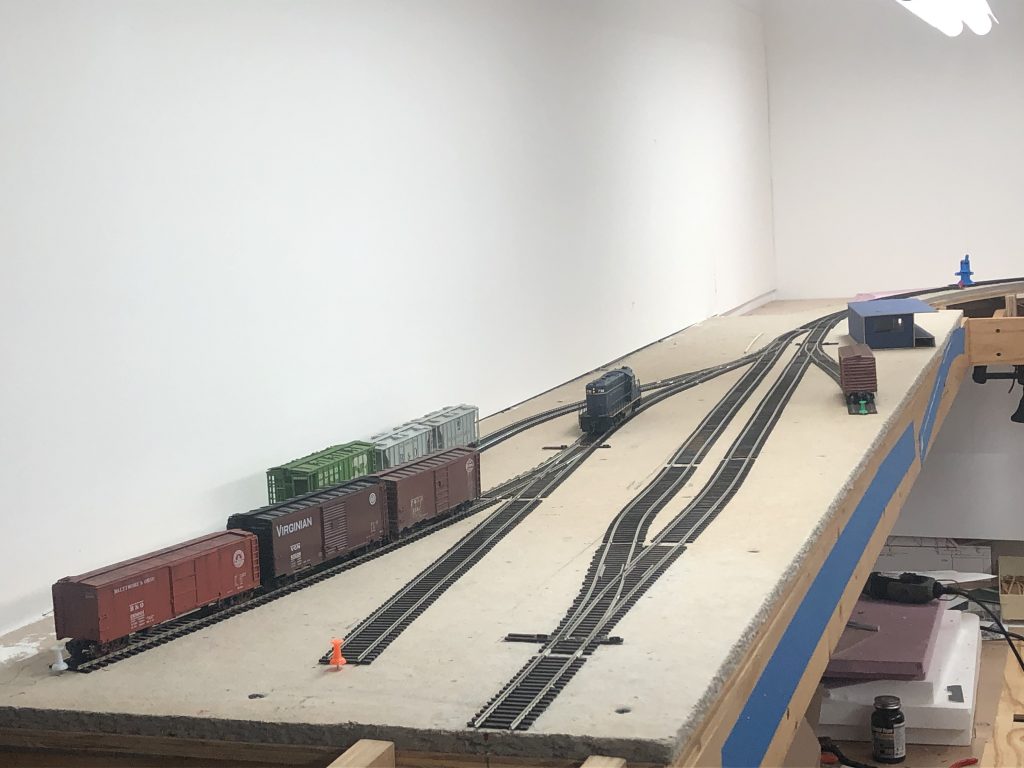
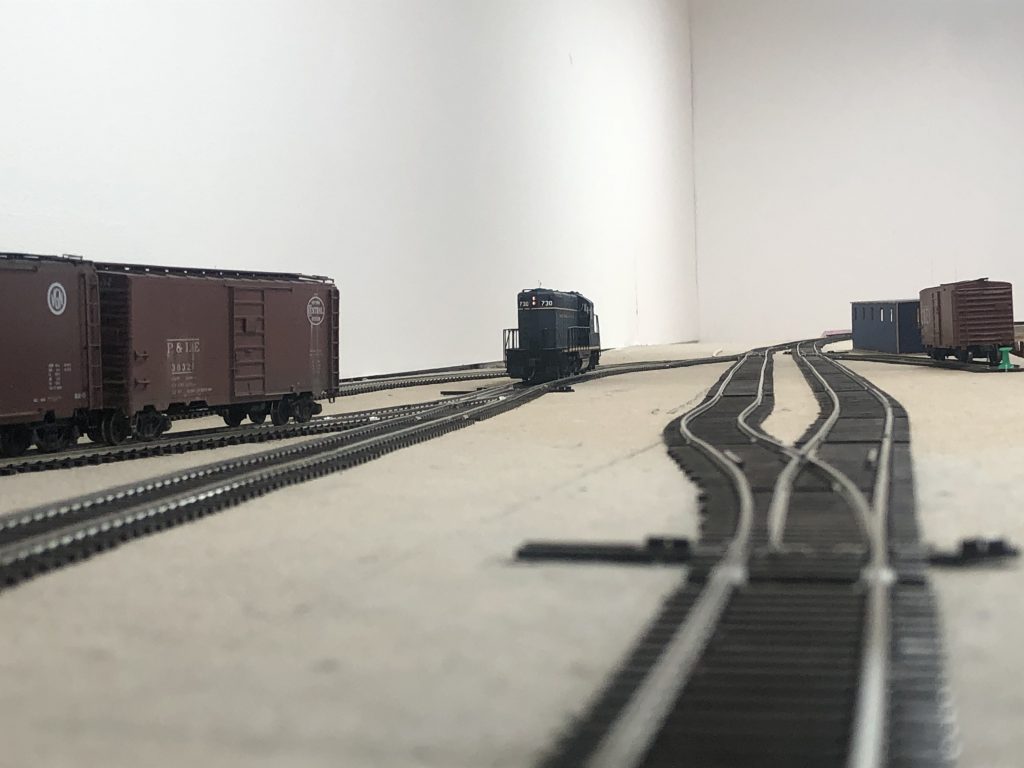
Additional Projects
One thing that has really struck me is that over the span of eight years working on this project I have accumulated a lot of stuff to put this layout together. Much of it is piled beneath and around the layout itself. As I work, stuff gets shifted around. I’m at a point now where I have pushed myself out of my comfort zone to try new things. Some of these things include simple things like soldering feeders to the bottom of the rails instead of the sides up to more complex things like hand-building complex curved turnouts. I couldn’t do this without help and encouragement from friends and family who push me forward and answer all my stupid questions.
Lately I’ve been learning how to install turnout machines. I mentioned above that I used Blue Point switch machines in Bethesda. This decision was primarily based on the fact that I owned five already (that I had in a box of turnout stuff) and I realized a fascia would be nigh impossible with the way this section of the upper deck of my layout is built. There is no real room above or below it for toggle switches, I don’t want to cut big holes in the benchwork, and I don’t want to protrude out. Solution? Blue Point turnout machines. They use a push-pull rod/handle and can sit right on the fascia with minimal intrusion. Perfect. I’m quite happy with how they have been working for me. Bonus, I can wire the turnout frogs right to the machine.
Another project that has been in the hopper for a while are eight Iowa Scaled Engineering MRServo-1 units I purchased a couple years ago. (unfortunately, this product has been discontinued!) These nifty little things use a board that controls a micro servo mounted to a 3D printed chassis. Wiring up a DPDT switch and attaching to a power bus gives you a nifty little slow-mo turnout controller. They have a few different bases including a slim profile one to allow for remote installation in tight spaces. The MRServo units came in three types with additional features. This is the most basic of the three, featuring only turnout motor control. For now, it’s all I need. I plan on adding a Frog Juicer eventually to handle the frogs. These MRServo-1 units will be used on the upper deck from Chevy Chase all the way up to Georgetown Junction, as there is ample space below the track to install a fascia with toggle switches.
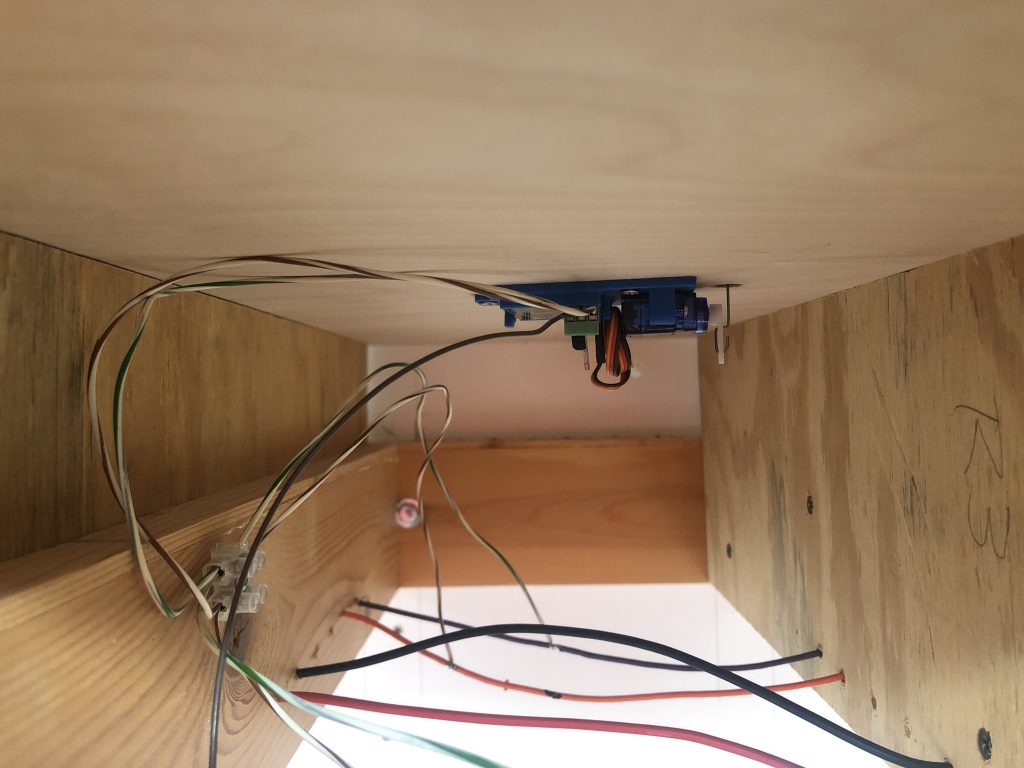
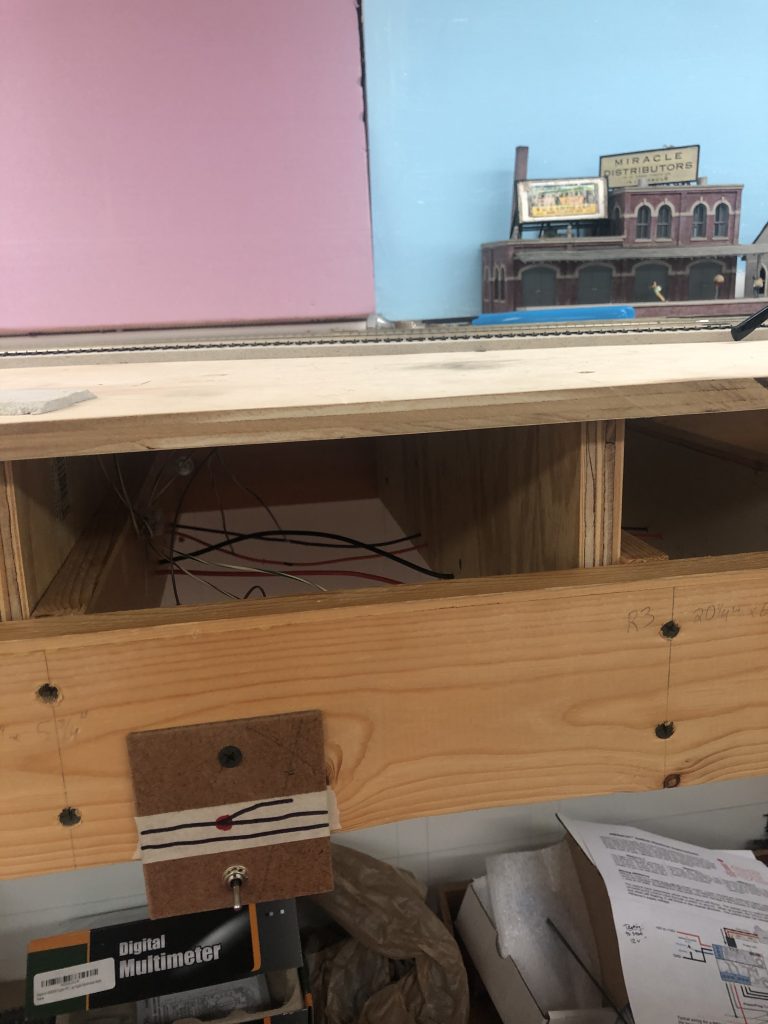
I am progressing my way through projects that have loomed over me for years. It feels great to burst through and make real progress on this layout and I’m learning so much along the way. I ran a train all the way from one end to the other with no issues whatsoever. Like so many things, when you break a project into smaller pieces it takes away some of the mystical difficulty, making it a bit more manageable. I have been crushing these small hurdles left and right. I am hoping to have a video in the next few weeks showing off the progress.
And then, once the upper deck is done… it’s on to the lower deck! Woah!! But first, I gotta do something about all that JUNK! (ha)
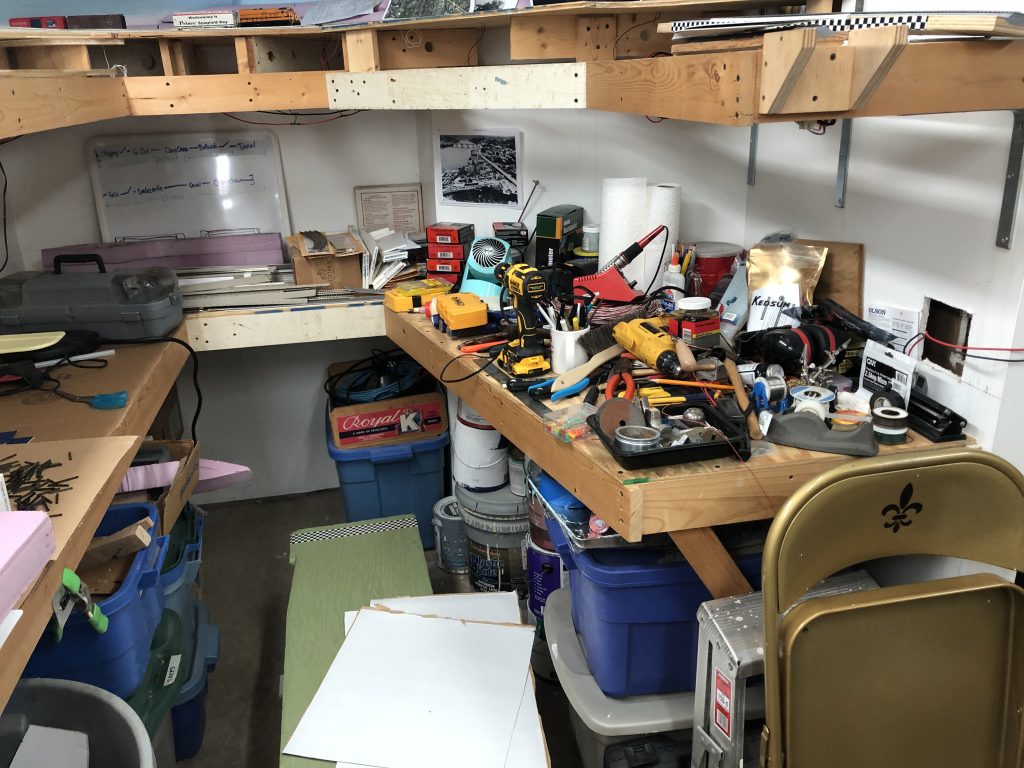
Looks great, can’t wait for the finished thing. Is the intended time period still late 40s-50s?
Congrats on the Bethesda track operation Ben! That is a major milestone!
Thanks! Me too. 🙂 Yes, the time period is still 1945-1955.
Thank you, Rich! I appreciate the encouragement.